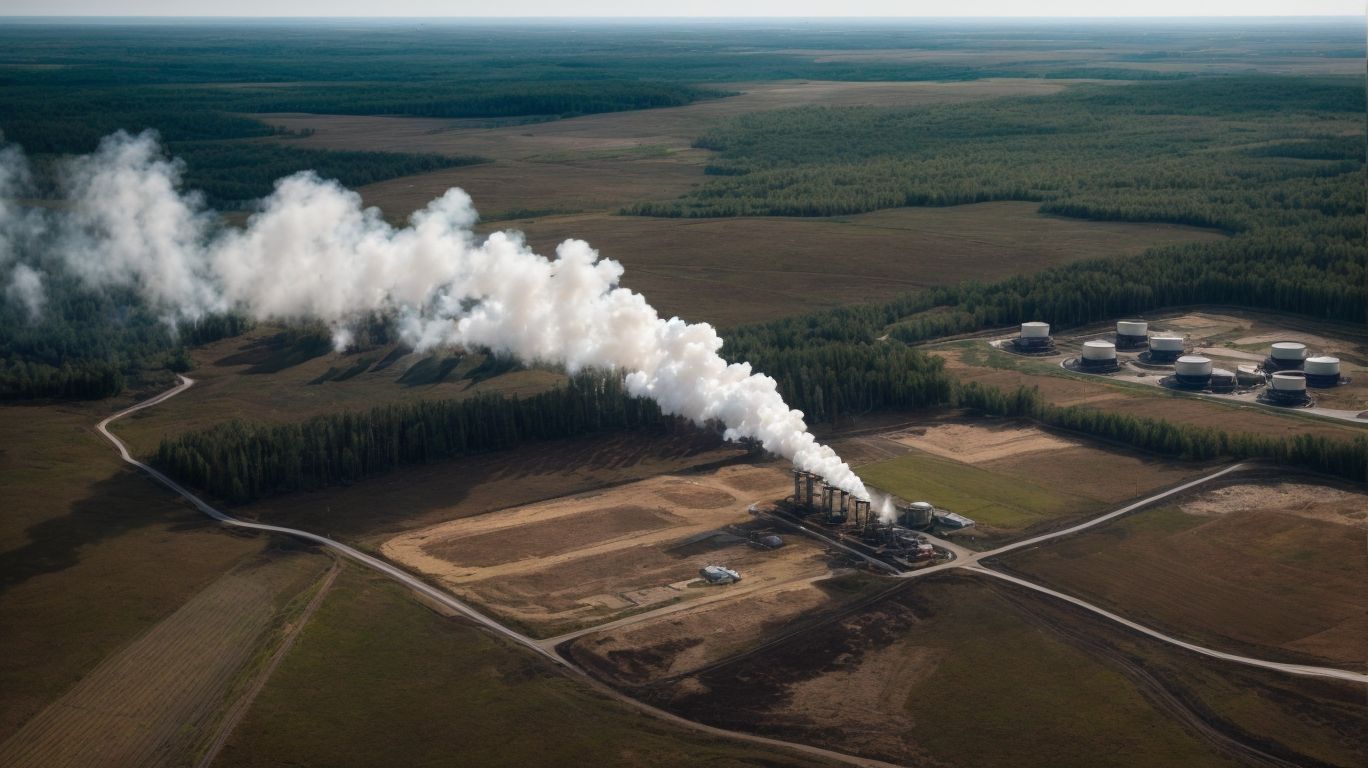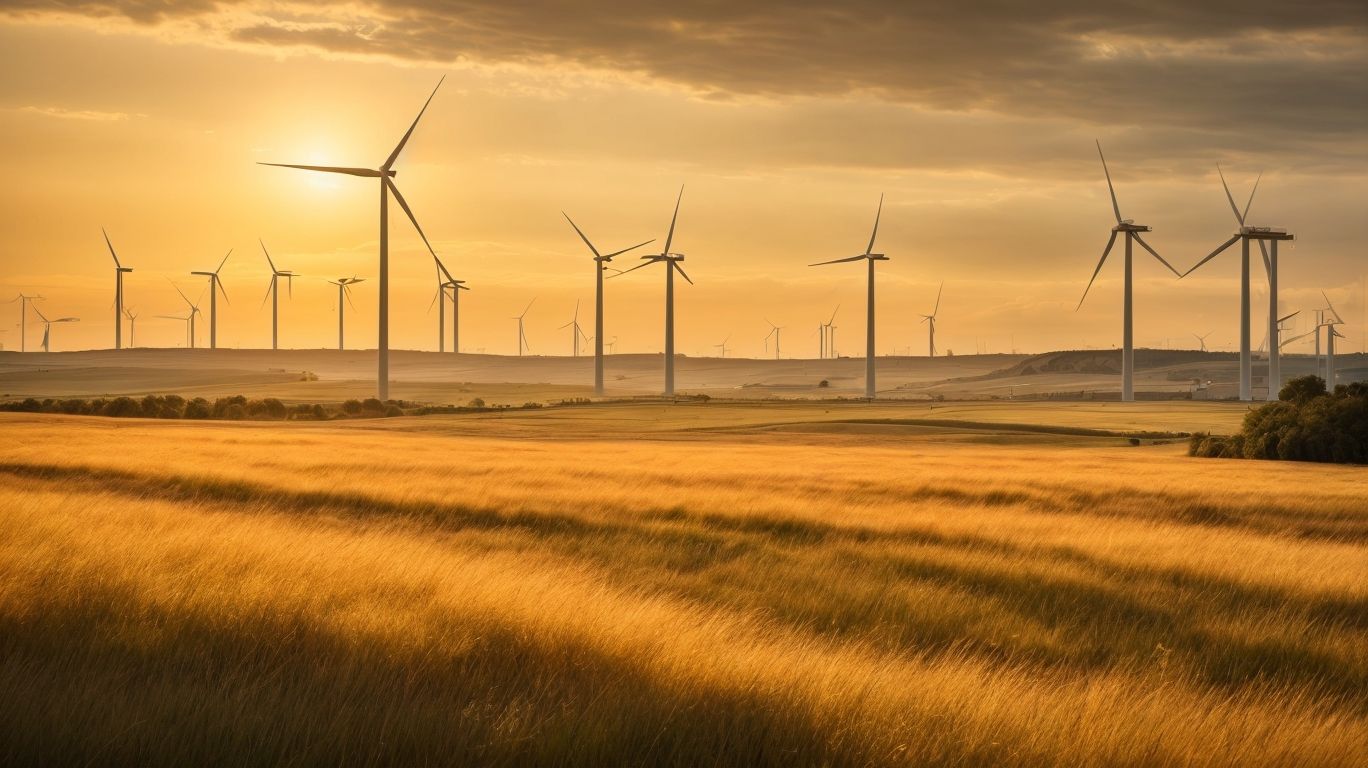Methane is a colorless, odorless, and highly flammable gas that is considered one of the most potent greenhouse gases contributing to climate change. It is often referred to as a “super pollutant” due to its ability to trap heat in the atmosphere and contribute to global warming. In this article, we will explore the sources of methane, its impact on climate change, and potential solutions to reduce its emissions.
Methane can be emitted from both natural and human-made sources. Natural sources include wetlands, termites, and oceans, while human-made sources include agricultural activities, landfills, and oil and gas production. According to a study published in the journal Nature, approximately 60% of global methane emissions come from human activities.
When methane is released into the atmosphere, it absorbs and traps heat, contributing to the greenhouse effect. The greenhouse effect is the natural process by which the Earth’s atmosphere traps heat, allowing the planet to maintain a habitable temperature. However, human activities, such as the burning of fossil fuels and the release of methane, are increasing the concentration of greenhouse gases in the atmosphere, leading to a rise in global temperatures.
The consequences of methane emissions on the environment are severe and far-reaching. These include global warming, ocean acidification, and air pollution. Methane emissions also contribute to the formation of ground-level ozone, which is harmful to human health and the environment.
To reduce methane emissions, strategies such as methane capture and use, methane mitigation technologies, and sustainable agriculture practices have been implemented. Methane capture and use involve capturing methane emissions from landfills and using it as a source of energy instead of letting it escape into the atmosphere. Methane mitigation technologies, such as leak detection and repair, can significantly reduce methane emissions from oil and gas production.
The Paris Agreement, a global effort to combat climate change, also recognizes the role of methane as a potent greenhouse gas. It aims to reduce methane emissions by 45% by 2030 and encourages countries to work together to develop and implement strategies for reducing these emissions.
In conclusion, methane emissions are a significant contributor to climate change, and reducing its impact requires a collective effort from governments, industries, and individuals. By understanding the sources of methane emissions and implementing solutions to reduce them, we can help mitigate the effects of this potent greenhouse gas and work towards a more sustainable future.
Key Takeaways:
What Is Methane?

Photo Credits: Chemicalglossary.Net by Brian Rodriguez
Methane is a colorless and odorless gas composed of one carbon atom and four hydrogen atoms. It is a potent greenhouse gas that significantly contributes to climate change. This gas is naturally produced by various sources, including wetlands, termites, and ruminant animals. Additionally, human activities such as fossil fuel extraction, livestock farming, and waste management also release methane as a byproduct.
Climate scientists are particularly concerned about methane due to its much higher warming potential than carbon dioxide. Therefore, understanding the sources and impact of methane emissions is crucial in developing effective strategies to mitigate its contribution to global warming.
What Are the Sources of Methane?

Photo Credits: Chemicalglossary.Net by Patrick Miller
Methane is a potent greenhouse gas that contributes significantly to climate change. But where does it come from? In this section, we will explore the various sources of methane, including both natural and human-caused sources. By understanding the origins of methane, we can gain a better understanding of how it affects our planet and what actions we can take to mitigate its impact. So let’s dive into the world of methane and uncover its sources.
1. Natural Sources
Natural sources of methane include:
- Wetlands: Methane is produced by anaerobic bacteria in wetlands through a process known as methanogenesis.
- Termites: These insects have specialized gut bacteria that produce methane during digestion.
- Oceans: Methane is released from the ocean floor through the decomposition of organic matter.
- Volcanic activity: Along with other gases, methane is also released from volcanoes during eruptions.
- Wildfires: The burning of vegetation can also result in the release of methane into the atmosphere.
2. Anthropogenic Sources
Anthropogenic sources, or human activities, are responsible for the release of methane into the atmosphere. These sources include:
- Agriculture: Livestock production, especially enteric fermentation and manure management, is a significant contributor to methane emissions.
- Energy production: The extraction, transport, and use of fossil fuels result in the release of methane.
- Waste management: Landfills produce methane due to the decomposition of organic waste.
- Rice cultivation: The flooding of rice fields creates an environment where methane-producing microbes thrive due to lack of oxygen.
True story: In a small town, residents implemented methane capture systems in their landfill. By capturing and converting methane into energy, they not only reduced emissions but also decreased their reliance on fossil fuels. This initiative not only improved local air quality but also provided renewable energy to nearby communities.
How Does Methane Contribute to Climate Change?
Methane is a potent greenhouse gas that plays a significant role in climate change. It is crucial to understand its impact in order to combat global warming. Here are the steps to explain how methane contributes to climate change:
- Methane is naturally emitted through processes such as the decomposition of organic matter.
- However, human activities, such as livestock farming and fossil fuel extraction, release substantial amounts of methane into the atmosphere.
- Once in the atmosphere, methane absorbs heat and traps it, leading to the greenhouse effect.
- Compared to carbon dioxide, methane has a much higher warming potential, although it stays in the atmosphere for a shorter period of time.
- The increase in methane emissions contributes to the rise in global temperatures, resulting in climate change and its associated impacts.
Historical example: During the Industrial Revolution, there was a significant increase in methane emissions due to the expansion of agriculture and increased coal mining. This surge in methane levels further intensified the warming of the Earth’s climate, contributing to the acceleration of climate change.
What Is the Greenhouse Effect?
The greenhouse effect is a natural process that plays a crucial role in regulating the Earth’s temperature. As sunlight reaches the Earth’s surface, some of it is absorbed and then re-emitted as heat. Greenhouse gases, such as methane, act as a protective layer, trapping some of this heat in the atmosphere. This process is vital for maintaining a livable climate. However, human activities, such as burning fossil fuels and deforestation, have significantly increased greenhouse gas concentrations, resulting in an intensified greenhouse effect and global warming. To mitigate the impact of the greenhouse effect, it is essential to reduce greenhouse gas emissions, shift towards renewable energy sources, and adopt sustainable practices in agriculture and industry.
How Does Methane Trap Heat in the Atmosphere?
Methane, a potent greenhouse gas, contributes to the greenhouse effect by trapping heat in the atmosphere. Here are the steps involved in this process:
- Methane is emitted into the atmosphere from various sources, including natural processes and human activities.
- Once in the atmosphere, methane absorbs infrared radiation from the sun.
- This absorption causes the molecules to vibrate and become excited.
- The excited molecules then release the absorbed energy as heat in all directions, including back towards Earth’s surface.
- This heat-trapping effect leads to an increase in surface temperature, ultimately contributing to global warming and climate change.
Understanding how methane traps heat in the atmosphere is crucial in addressing its impact and developing strategies to mitigate its emissions.
What Are the Effects of Methane Emissions on the Environment?

Photo Credits: Chemicalglossary.Net by Jesse Hall
While carbon dioxide often takes the spotlight in discussions about greenhouse gases, methane also plays a significant role in contributing to climate change. In this section, we will dive into the effects of methane emissions on the environment. From its contribution to global warming to its impact on ocean acidification and air pollution, we will examine the various ways in which methane affects our planet and its delicate ecosystems.
1. Global Warming
Global warming is a critical environmental issue caused by the build-up of greenhouse gases in the atmosphere, including methane. To combat global warming caused by methane emissions, there are several steps that can be taken:
- Reduce the use of fossil fuels and transition to renewable energy sources.
- Implement stricter regulations on industrial methane emissions.
- Improve waste management practices to minimize methane emissions from landfills.
- Promote sustainable agriculture techniques, such as precision farming and organic practices.
- Support reforestation efforts to absorb excess carbon dioxide and decrease methane levels.
Pro-tip: Every individual can make a difference in reducing global warming by making small changes in our daily lives, such as conserving energy, recycling, and advocating for sustainable practices. Together, we can have a significant impact on mitigating global warming.
2. Ocean Acidification
Ocean acidification is a significant consequence of methane emissions. To mitigate its impact, we can take the following steps:
- Reduce carbon dioxide emissions: Decreasing CO2 levels can help alleviate the effects of ocean acidification, as excess CO2 leads to more acidic seawater.
- Limit methane emissions: Methane contributes to ocean acidification indirectly by enhancing the greenhouse effect. Implementing measures to reduce methane emissions can minimize its impact on the oceans.
- Protect marine ecosystems: Preserving and conserving marine habitats can help promote resilience against the effects of ocean acidification.
By taking these steps, we can address the issue of ocean acidification and safeguard the health of our oceans for future generations.
The Role of Methane as a Potent Greenhouse Gas: Understanding its Impact on Climate Change
3. Air Pollution
Air pollution is a consequence of methane emissions on the environment. When methane combines with other pollutants in the atmosphere, it can contribute to the creation of ground-level ozone, a significant element of smog. This can result in respiratory issues, particularly for those with pre-existing conditions like asthma.
To decrease methane emissions and address air pollution, we can implement measures such as:
- Methane capture and utilization
- Methane mitigation technologies
- Sustainable agriculture practices
By adopting these strategies, we can aid in enhancing air quality and safeguarding human health.
How Can We Reduce Methane Emissions?

Photo Credits: Chemicalglossary.Net by Kyle Moore
As one of the most potent greenhouse gases, methane plays a significant role in contributing to climate change. To combat its impact, we must first understand how to reduce methane emissions. In this section, we will explore various methods and technologies that can help decrease methane levels in the atmosphere. These include methane capture and use, mitigation technologies, and sustainable agriculture practices. By implementing these solutions, we can work towards a more sustainable and environmentally-friendly future.
1. Methane Capture and Use
Methane capture and use is a crucial step in reducing methane emissions and mitigating climate change. To promote this important practice, here are some steps that can be taken:
- Invest in infrastructure: Develop systems to capture methane from landfills, livestock operations, and wastewater treatment plants.
- Promote renewable energy: Encourage the use of methane as a fuel source by supporting the development of anaerobic digesters and biogas facilities.
- Create incentives: Provide financial incentives and regulatory support to encourage industries to capture and utilize methane rather than releasing it into the atmosphere.
- Collaborate with stakeholders: Foster partnerships among government agencies, industry leaders, and environmental organizations to facilitate knowledge sharing and innovation in methane capture and use.
- Educate and raise awareness: Inform the public about the benefits of methane capture and use, both in terms of reducing greenhouse gas emissions and promoting sustainable energy sources.
2. Methane Mitigation Technologies
Methane mitigation technologies are essential in reducing methane emissions and combating climate change. To help mitigate methane emissions, here are some steps that can be taken:
- Enhance methane capture and storage systems in oil and gas operations.
- Implement landfill gas collection systems to capture methane emitted from decomposing waste.
- Promote the use of anaerobic digesters to capture methane from agricultural waste and convert it into usable biogas.
- Encourage the adoption of methane recovery systems in coal mining operations.
- Support the development and implementation of leak detection and repair programs to identify and fix methane leaks in infrastructure and pipelines.
Fact: Methane has a Global Warming Potential (GWP) 28 times greater than carbon dioxide over a 100-year period, making it a potent greenhouse gas. Taking steps to mitigate methane emissions is crucial in addressing climate change.
3. Sustainable Agriculture Practices
Sustainable agriculture practices play a crucial role in mitigating methane emissions from the agricultural sector. Here are some steps that can be taken:
- Implementing proper manure management techniques, such as anaerobic digestion or composting, to decrease methane emissions from livestock waste.
- Adopting precision agriculture techniques, like efficient irrigation and fertilizer management, to minimize methane emissions from agricultural activities.
- Promoting agroforestry practices, which involve planting trees alongside crops or livestock, as they can absorb methane and contribute to carbon sequestration.
- Encouraging the use of cover crops to enhance soil health and reduce methane emissions from soil.
- Supporting the transition to organic farming methods, which avoid the use of synthetic fertilizers and pesticides and can help decrease methane emissions from agricultural practices.
In the early 2000s, a small community in California implemented sustainable agriculture practices on their farms. By adopting these practices, they were able to significantly reduce methane emissions from their livestock and agricultural activities. This not only benefited the environment by decreasing greenhouse gas emissions, but it also improved the overall health and productivity of their farms. Today, these sustainable agriculture practices serve as a model for other communities and farmers worldwide.
What Is the Role of Methane in the Paris Agreement?

Photo Credits: Chemicalglossary.Net by Anthony White
The role of methane in the Paris Agreement is crucial in the fight against climate change. Methane is a powerful greenhouse gas that contributes to the warming of the planet. As part of the Paris Agreement, countries have committed to reducing their greenhouse gas emissions, including methane, in order to limit the rise in global temperatures.
To achieve emission reduction targets, measures to decrease methane, such as capturing it from agriculture and waste management, are encouraged. Additionally, countries are urged to report their methane emissions and implement strategies to monitor and reduce methane leaks from the oil and gas industry. By addressing methane emissions, the Paris Agreement aims to effectively mitigate the effects of climate change.
Frequently Asked Questions
What is methane and why is it important to understand its impact on climate change?
Methane is a potent greenhouse gas, meaning it has a significant impact on global warming. It is mainly released through human activities, such as agriculture and the energy sector, and has an atmospheric lifetime of 12 years. Understanding the role of methane in climate change is crucial for mitigating its impact and protecting the environment.
How much methane is currently in the atmosphere and where does it come from?
The concentration of methane in the atmosphere is two-and-a-half times higher than pre-industrial levels, and it is steadily increasing. Around 40% of methane emissions come from natural sources, while 60% come from human activities, with agriculture and the energy sector being the largest sources.
How does methane contribute to climate change compared to other greenhouse gases like CO2?
While methane has a shorter atmospheric lifetime than CO2, it is a much more potent greenhouse gas, with a global warming potential of 84-87 over a 20-year timeframe and 28-36 over a 100-year timeframe. This means that one tonne of methane can have the same impact on global warming as 28 to 36 tonnes of CO2.
What are the immediate benefits of cutting methane emissions?
Reducing methane emissions is crucial for immediately slowing global warming. Methane has 80 times the warming power of CO2 in the first 20 years after reaching the atmosphere, and at least 25% of current global warming is caused by methane from human activities. Immediate benefits include avoiding severe climate risks like crop loss, wildfires, and extreme weather.
How can we reduce methane emissions and why is this important for the energy industry?
The International Energy Agency’s Methane Tracker 2021 report highlights the potential for cost-effectively reducing methane emissions from oil and gas operations. This is important because the energy sector is one of the largest sources of anthropogenic methane emissions. Additionally, unlike CO2, methane has commercial value as the main component of natural gas, making it possible to capture and use it.
What tools and resources are available today to help reduce methane emissions?
There are several tools and resources available to help reduce methane emissions. These include better data and ground-based measurement tools, peer-reviewed research, and initiatives like the MethaneSAT subsidiary. The Environmental Protection Agency also has regulations in place to reduce methane pollution, and the Intergovernmental Panel on Climate Change has provided guidance on reducing anthropogenic emissions by 75% in the near term.
